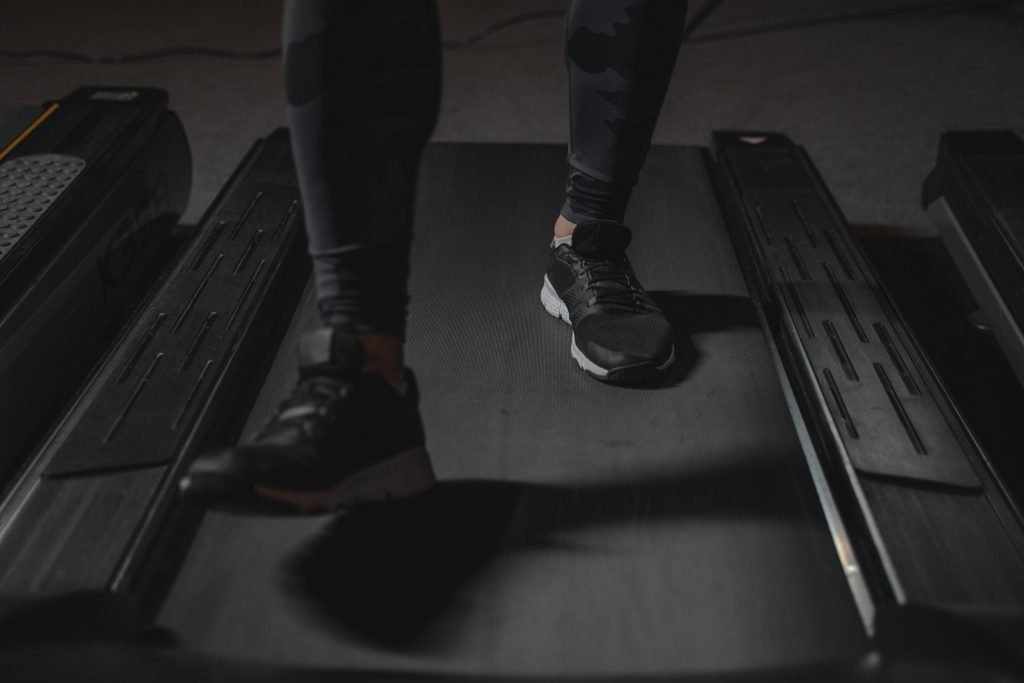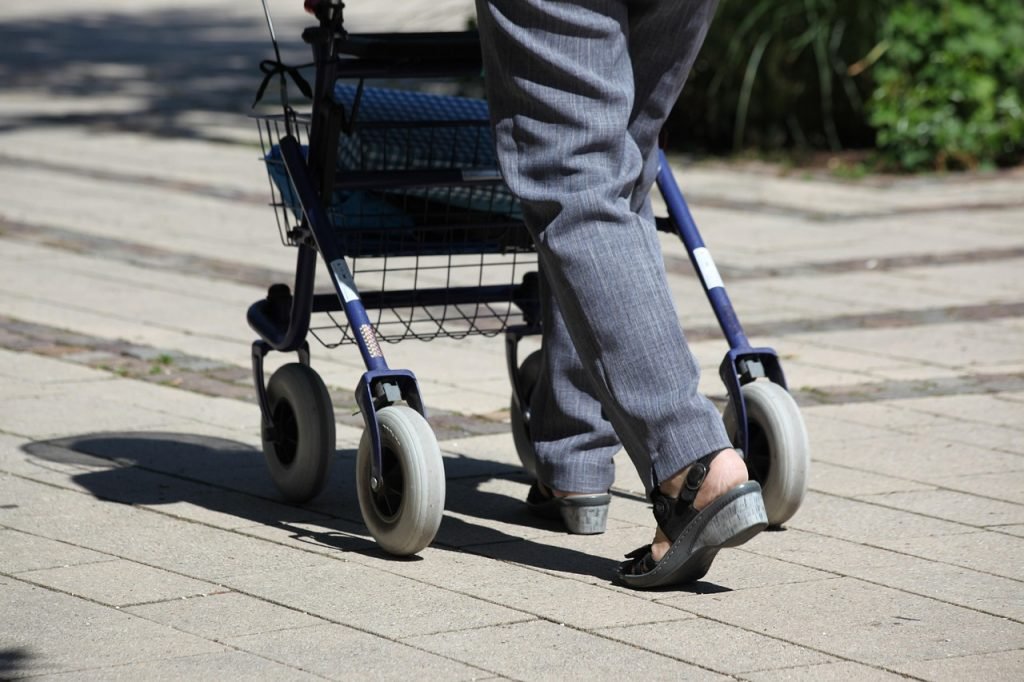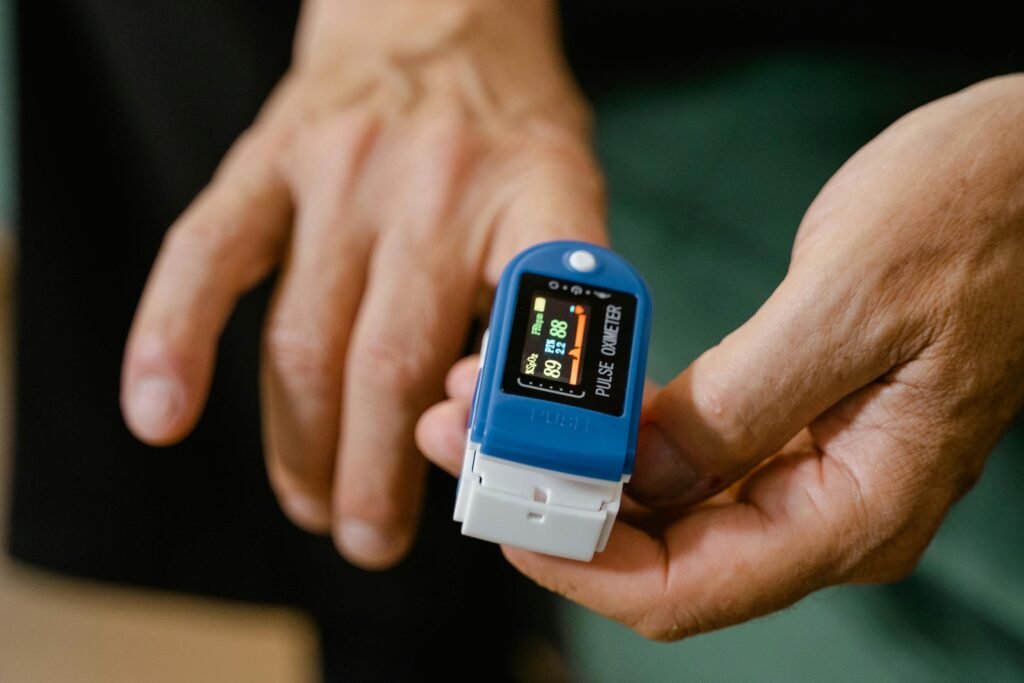Introduction to Compression Garments For POTS
Postural Orthostatic Tachycardia Syndrome (POTS) is a form of dysautonomia that affects blood circulation and the autonomic nervous system. One of the most effective non-pharmaceutical interventions for managing POTS symptoms is the use of compression garments. These specially designed clothing items provide external pressure that helps improve blood flow, reduce blood pooling, and alleviate many symptoms associated with POTS.
Compression garments play a crucial role in supporting individuals with POTS as part of a comprehensive treatment plan. In this article, we’ll dive into how compression garments work, the types available, and how to incorporate them into daily life for symptom relief.
Understanding How Compression Garments Help with POTS
POTS (Postural Orthostatic Tachycardia Syndrome) is a condition where the body struggles to regulate blood flow upon standing, leading to symptoms such as dizziness, palpitations, fatigue, and fainting. The primary issue stems from blood pooling in the lower extremities, reducing the amount of oxygenated blood reaching the brain.
Have you found that supplementing for any nutritional deficiency helped your symptoms?
How Compression Garments Improve Circulation
Compression garments apply graduated pressure, meaning the highest compression occurs at the ankles or abdomen, gradually decreasing as it moves upward. This helps: ✅ Push blood back toward the heart – Improving venous return and preventing excessive blood pooling. ✅ Stabilize blood pressure – Reducing symptoms of orthostatic intolerance that occur upon standing. ✅ Minimize tachycardia episodes – By aiding circulation, compression reduces the need for the heart to work harder to compensate for blood flow issues.
Targeted Compression for Different Needs
Compression garments can be tailored to symptom severity:
- Leg compression (socks & stockings) – Ideal for preventing blood pooling in the lower extremities.
- Abdominal compression (binders & high-waisted garments) – Helps push blood upward, supporting circulation in those who experience abdominal blood pooling.
- Full-length compression (leggings, pantyhose-style) – Provides comprehensive support, ensuring consistent blood pressure regulation across multiple regions.
By improving circulatory efficiency, compression garments directly address one of the core dysfunctions in POTS, making them a critical tool for daily symptom management.
How Compression Garments Regulate Autonomic Dysfunction in POTS
POTS is a disorder of the autonomic nervous system (ANS), which controls involuntary processes like heart rate, blood pressure, and circulation. In POTS patients, autonomic dysfunction leads to blood pooling, dizziness, tachycardia, and fainting, especially upon standing.
The Role of Compression Therapy in Autonomic Regulation
Compression garments provide targeted pressure that supports autonomic balance by: ✅ Enhancing baroreceptor function – Baroreceptors regulate blood pressure by signaling the brain to adjust circulation. Compression wear helps maintain stable blood flow, preventing dramatic shifts in blood pressure. ✅ Reducing sympathetic overactivation – In POTS, the fight-or-flight response can become overstimulated, leading to adrenaline surges and tachycardia. Compression therapy reduces autonomic stress, keeping heart rate steadier. ✅ Supporting parasympathetic activity – By stabilizing circulation, compression garments allow the parasympathetic nervous system to function more effectively, reducing fatigue and postural instability.
Scientific Studies on Compression & Autonomic Regulation
📌 Stewart et al., 2018 (American Journal of Physiology)
- Found that waist-high compression garments improved autonomic adaptation in POTS patients, leading to better postural stability.
📌 Mack et al., 2021 (Clinical Autonomic Research Journal)
- Demonstrated that thigh-high compression stockings decreased sympathetic activation, reducing episodes of stress-induced tachycardia.
📌 Fu et al., 2022 (Neuroscience & Biobehavioral Reviews)
- Showed that compression therapy enhances baroreceptor sensitivity, improving blood pressure regulation and autonomic function in dysautonomia patients.
How to Maximize Compression Benefits for Autonomic Stability
- Wear garments consistently, especially during high-risk symptom periods (morning, prolonged standing, or physical activity).
- Pair compression with hydration and salt intake to further support autonomic blood pressure regulation.
- Combine compression therapy with recumbent exercise, such as cycling or swimming, to improve cardiovascular adaptation.
Compression garments don’t just reduce blood pooling—they actively assist the autonomic nervous system, making them a key tool for symptom control in POTS.
Benefits of Wearing Compression Garments for POTS
Incorporating compression garments into a POTS treatment plan can bring a wide array of benefits, including:
- Reduced dizziness and lightheadedness: Improved blood circulation minimizes these symptoms.
- Increased stamina: With better blood flow, individuals often experience less fatigue.
- Fewer episodes of fainting: Compression garments help prevent drastic blood pressure drops.
- Improved quality of life: Many users report enhanced daily functioning and reduced anxiety about symptom flare-ups.
Types of Compression Garments for POTS
There are several types of compression wear tailored to different parts of the body. Each serves a unique purpose depending on where blood pooling occurs most severely.
Compression Socks & Stockings
Compression socks and stockings are the most widely used compression garments for POTS management, helping improve venous return, circulation, and blood pressure regulation.
Types of Compression Socks & Stockings
- Knee-high compression socks – Ideal for mild circulation issues and can effectively reduce pooling in the lower legs.
- Thigh-high compression stockings – Provide more comprehensive support, preventing blood pooling further up the legs.
- Pantyhose-style compression garments – Offer full-leg and abdominal support, which can be beneficial for those with significant blood pooling in multiple areas.
Choosing the Right Compression Level
Compression garments come in various pressure ratings measured in mmHg:
- Mild (10-15 mmHg) – Light compression for occasional use.
- Moderate (15-20 mmHg) – Common for daily wear and symptom management.
- Firm (20-30 mmHg) – Recommended for those with severe blood pooling or who experience frequent dizziness.
- Medical-grade (30-40 mmHg) – Typically prescribed for severe circulatory issues.
Compression socks and stockings help maintain better blood flow, reducing symptoms like lightheadedness, brain fog, and fatigue.
Abdominal Compression Garments or Binders
Abdominal compression garments, also known as binders or wraps, target blood pooling in the midsection, which is a common issue for POTS patients.
How Abdominal Compression Helps
- Increases intra-abdominal pressure – Helps push blood back toward the heart, improving circulation.
- Reduces dizziness upon standing – Stabilizes blood pressure to minimize orthostatic intolerance symptoms.
- Supports the lower extremities – Helps prevent excessive blood pooling in the legs.
Types of Abdominal Compression
- Elastic abdominal binders – Adjustable support that wraps tightly around the midsection.
- High-waisted compression shorts or leggings – Provide both abdominal and leg compression, creating a more seamless support system.
- Medical-grade abdominal binders – Often prescribed for severe blood pooling or orthostatic hypotension.
For those with significant abdominal blood pooling, using these garments in combination with lower-body compression can maximize symptom relief.
Compression Shorts & Leggings
Compression shorts and leggings are a discreet and comfortable alternative to traditional compression garments. They provide full-leg support while offering flexibility, making them easier to wear throughout the day.
Benefits of Compression Shorts & Leggings
- Improved venous return – Helps prevent blood pooling in the thighs and calves.
- More discreet than traditional stockings – Can be worn under clothing without drawing attention.
- Provides mild abdominal compression – High-waisted versions offer dual benefits for circulation.
Ideal Scenarios for Compression Shorts & Leggings
- Daily wear – Great for maintaining consistent circulation support without bulkiness.
- Exercise-friendly – Compression leggings are ideal for preventing post-exercise crashes.
- Travel use – Provides circulation support for long sitting periods.
For POTS patients who struggle with leg swelling, circulation issues, or orthostatic intolerance, compression shorts and leggings offer a blend of function and style, making them an appealing daily option.
Choosing the Right Compression Level
Compression Garments for POTS are available in various pressure levels, measured in mmHg (millimeters of mercury), which determine how much support they provide. For most people with POTS, moderate to firm compression (20-30 mmHg to 30-40 mmHg) is typically recommended, as it helps improve circulation and reduce blood pooling in the lower body.
Compression Levels Explained
- Mild (10-15 mmHg) – Light support, useful for occasional symptom relief.
- Moderate (15-20 mmHg) – A common level for daily use with mild symptoms.
- Firm (20-30 mmHg) – Often recommended for consistent symptom management.
- Medical-Grade (30-40 mmHg) – Ideal for severe blood pooling and orthostatic intolerance.
Prescription vs. Over-the-Counter Options
- Over-the-counter compression garments are easily accessible but may offer less precise pressure control.
- Prescription-grade options often provide better durability and more effective pressure distribution, especially for those needing higher levels of compression.
- Always consult a healthcare provider before selecting a compression level, as individual needs vary.
When and How to Wear Compression Garments
Compression garments should be worn during the times of day when symptoms are most likely to occur, such as in the morning, during prolonged standing, or while engaging in activities that may trigger dizziness or fatigue.
Best Practices for Wearing Compression Garments
✅ Put them on first thing in the morning – Before getting out of bed, when blood pooling is most likely to occur. ✅ Remove them before bedtime – Unless otherwise directed by a physician, as wearing them overnight may interfere with natural circulation. ✅ Pair with other POTS management strategies, such as:
- Increasing salt and fluid intake to enhance blood volume.
- Elevating legs when resting to further reduce blood pooling.
- Eating small, frequent meals to avoid blood pressure drops after large meals.
Consistently wearing compression garments can significantly improve circulation and autonomic stability, leading to better overall functionality throughout the day.
Choosing the Best Fabric and Brands for Comfort & Effectiveness
Not all Compression Garments for POTS are created equal—fabric choice and brand quality play a significant role in both comfort and effectiveness. POTS patients need garments that provide consistent compression without causing discomfort or overheating.
Best Fabric Choices for Compression Garments for POTS
- Moisture-Wicking Materials – Breathable synthetic blends (like nylon or polyester) help regulate temperature and keep skin dry.
- Cotton-Lined Compression – Offers extra softness, reducing irritation for sensitive skin.
- Graduated Compression Weaves – Ensure even pressure distribution, improving circulation without restricting movement.
- Latex-Free Options – Prevent allergic reactions or skin irritation for those with sensitivities.
Choosing the right fabric ensures long-lasting comfort, particularly for daily wear.
Recommended Brands for Compression Garments for POTS
- Juzo – Known for soft, breathable materials and comfortable fit.
- Sigvaris – Offers medical-grade graduated compression, ideal for managing blood pooling.
- Jobst – Specializes in high-quality stockings and full-leg compression options.
- Therafirm – Provides moisture-wicking, flexible garments suitable for active lifestyles.
- CEP Compression – Great for athletes or those needing mobility-friendly compression leggings.
Opting for well-reviewed, medical-grade brands ensures effective symptom relief, as cheaper compression options may lose elasticity or provide uneven pressure distribution.

GnarlyTree | DIET AND EATING
POTS and Salt Intake | Mastering Sodium Balance for Better Days
Understanding POTS & the Role of Salt Salt plays a critical role in maintaining blood volume and blood pressure—two key issues in POTS. This article explores how POTS and SALT...
How to Properly Wash and Maintain Compression Garments
Taking care of Compression Garments for POTS extends their lifespan, maintains their elasticity, and ensures they continue providing effective symptom relief for POTS.
Washing Guidelines
✅ Hand wash or use a delicate cycle – Gentle washing preserves the compression fibers and prevents premature stretching. ✅ Use mild detergent – Harsh soaps or fabric softeners can break down elasticity, reducing effectiveness. ✅ Avoid hot water – Heat weakens the compression material—use lukewarm or cool water instead. ✅ Rinse thoroughly – Residual detergent can weaken the fabric and cause skin irritation.
Drying Instructions
✅ Air dry flat – Lay garments out on a towel to maintain shape. ✅ Avoid direct sunlight or heat – High temperatures can reduce elasticity over time. ✅ Do not use a dryer – Compression fabrics are heat-sensitive, and tumble drying will shorten their lifespan.
Storage & Care Tips
✅ Rotate between multiple pairs – Having extra sets prevents excessive wear and tear on a single garment. ✅ Store in a cool, dry place – Humidity can affect fabric integrity. ✅ Inspect regularly for wear – If compression garments start loosening, they may need replacing.
With proper care, compression garments remain effective for months to years, ensuring consistent symptom management without losing compression strength.
How to Tell When Compression Garments Need Replacing
Compression garments lose effectiveness over time, especially with frequent use and washing. Knowing when to replace them ensures consistent symptom management for POTS.
Signs Your Compression Garments Need Replacing
✅ Loss of elasticity – If socks, stockings, or leggings no longer feel as tight, their compression strength may have weakened. ✅ Slipping or sagging – If garments no longer stay in place throughout the day, they are no longer providing proper support. ✅ Worn-out fabric – Thin areas, visible stretching, or loose threads indicate the material is breaking down. ✅ Reduced symptom relief – If compression garments aren’t reducing dizziness or blood pooling as they once did, their pressure distribution may be compromised.
How Often Should You Replace Compression Garments?
- Daily-worn compression socks or stockings – Typically every 3–6 months, depending on use.
- Compression leggings or shorts – Every 6–12 months, based on wear frequency.
- Abdominal binders – May last up to a year, but elasticity weakens over time.
Extending the Lifespan of Compression Garments
✅ Rotate multiple pairs – Having at least two sets prevents excessive wear on one. ✅ Follow proper washing care – Hand washing and avoiding heat exposure preserves compression strength. ✅ Store properly – Keep garments in a cool, dry place to prevent fabric degradation.
Regularly replacing compression garments ensures continuous symptom relief and optimal circulation support
Common Concerns & Solutions
Discomfort
Compression garments for POTS may initially feel too tight or restrictive, especially when first introduced. However, discomfort often eases with proper sizing and gradual wear adjustment.
✅ Choose the correct size – Sizing varies between brands, so checking measurement charts is key. ✅ Break them in slowly – Start with short wear periods, gradually increasing duration. ✅ Try different styles – Knee-high socks, leggings, or softer materials may feel more comfortable.
Most users adapt within a few weeks, finding relief as circulation improves.
Heat Sensitivity
Some compression garments can feel too warm, particularly in hot or humid climates. Breathability is key to preventing overheating while maintaining effectiveness.
✅ Look for moisture-wicking fabrics – Nylon, spandex blends, and breathable synthetic materials help regulate temperature. ✅ Opt for lighter compression levels – Lower mmHg ratings may feel less restrictive in hot weather. ✅ Wear compression strategically – Use shorter garments, like knee-high socks, instead of full-length stockings when necessary.
Choosing seasonally appropriate compression wear makes daily use more manageable.
Style and Visibility
Traditional compression garments often had a medical look, making some users hesitant to wear them regularly. Fortunately, modern designs blend compression with style, allowing for discreet and fashionable choices.
✅ Look for athletic-style compression wear – Leggings, sleeves, and socks now resemble everyday clothing. ✅ Choose neutral colors – Many brands offer skin-tone and black options for discreet wear. ✅ Layer under clothing – Compression shorts or stockings can easily be worn under outfits for seamless support.
With evolving designs, Compression Garments for POTS no longer have to look medical, increasing daily wear compliance and confidence.
Incorporating Compression Garments into a Holistic POTS Plan
Compression Garments for POTS are highly effective, but they work best when combined with other lifestyle adjustments to support autonomic function. A multi-faceted approach ensures better symptom control and maximizes overall circulation benefits.
Hydration for Blood Volume Support
Maintaining high fluid intake increases blood volume, helping reduce dizziness and orthostatic intolerance. ✅ Drink 2-3 liters of fluids daily, including electrolyte-rich beverages. ✅ Choose oral rehydration solutions for better sodium absorption. ✅ Monitor urine color to prevent dehydration-related symptoms.
Diet Modifications to Stabilize Blood Pressure
For POTS patients, a high-sodium diet (under medical supervision) can help regulate blood pressure and circulation. ✅ Increase sodium intake (3,000–10,000 mg/day, as advised by a doctor). ✅ Pair salt intake with fluids to prevent excessive dehydration. ✅ Avoid large meals, which can trigger blood pressure drops.
Exercise: Low-Impact Movement for Autonomic Balance
Recumbent exercises promote circulation without causing excessive heart rate spikes. ✅ Cycling & rowing – Supports cardiovascular function while minimizing blood pooling. ✅ Swimming – Buoyancy prevents orthostatic stress while encouraging movement. ✅ Resistance training – Strengthens leg muscles for improved venous return.
Sleep Hygiene for Nighttime Symptom Control
Elevating the head of the bed reduces overnight blood pooling, improving morning stability. ✅ Raise the bed 6–10 inches to support circulation. ✅ Optimize bedtime hydration for overnight stability. ✅ Maintain consistent sleep schedules to regulate autonomic responses.
Compression garments work best when integrated into a comprehensive symptom management plan, ensuring greater consistency in circulation control and long-term autonomic support.
What the Research Says
Scientific studies have consistently shown that compression garments play a crucial role in managing orthostatic intolerance in POTS patients. These garments improve venous return, preventing excessive blood pooling in the lower extremities, which is one of the core physiological challenges in dysautonomia.
Key Findings from Research on Compression Garments for POTS
- Increased venous return – Compression wear helps push blood back toward the heart, preventing dizziness and lightheadedness.
- Improved blood pressure regulation – Studies have found that graduated compression stockings help maintain more stable blood pressure while standing.
- Reduced symptoms of orthostatic intolerance – Patients using waist-high or full-length compression garments reported fewer episodes of syncope, fatigue, and tachycardia.
Key Studies Supporting Compression Therapy in POTS
- 📌 Fu et al., 2017 (Journal of the American College of Cardiology) This study investigated the effects of compression garments on blood pressure regulation in POTS patients. Findings showed that thigh-high and abdominal compression significantly improved standing blood pressure and reduced dizziness and fatigue.
- 📌 Taneja et al., 2020 (Autonomic Neuroscience Journal) Researchers analyzed the impact of graduated compression stockings on autonomic stability. Results indicated that compression garments, particularly those rated at 20-30 mmHg pressure, reduced postural blood pooling, improving circulation and minimizing syncope risk.
- 📌 Fedorowski et al., 2022 (Clinical Autonomic Research Journal) A clinical review of compression therapy in POTS treatment highlighted the importance of waist-high compression garments, showing measurable improvements in heart rate variability and blood pressure control when combined with increased fluid intake.
Why Compression Works for POTS Patients
Compression garments for POTS directly address the physiological issues behind POTS symptoms: ✅ They prevent excessive blood pooling, ensuring blood returns efficiently to the upper body. ✅ They help stabilize autonomic function, reducing postural dizziness and fatigue. ✅ They enhance circulatory support, complementing hydration, salt intake, and lifestyle modifications.
Compression therapy is backed by science, and when combined with other symptom management strategies, it provides a powerful tool for improving daily stability.

GnarlyTree | PRACTICAL TIPS
Effective Strategies for Managing Fatigue in Chronic Illness
Understanding Chronic Fatigue in Chronic Illness Managing Fatigue in Chronic Illness can be done. It is one of the most debilitating symptoms to have - affecting daily function, productivity, and...
🧦 FAQ: Compression Clothing for POTS
1. How do Compression Garments for POTS help?
They apply pressure to the legs or abdomen, improving blood flow, reducing pooling, and relieving symptoms like dizziness and fatigue.
2. What types of compression garments are best for POTS?
Knee-high stockings, thigh-highs, full-length hose, abdominal compression garments or binders, and compression leggings all target different areas where blood pooling occurs.
3. What level of compression is recommended?
Moderate to firm compression (20–40 mmHg) is generally effective, but it’s best to consult a healthcare provider for personalized advice.
4. When should I wear compression garments?
They’re most effective when worn in the morning or during long periods of standing or activity; put them on before getting out of bed if possible.
5. Can Compression Garments for POTS be stylish and comfortable?
Yes—modern designs include breathable, discreet, and fashionable options to improve comfort and daily wear.
6. Are there side effects or discomfort with compression wear?
Some people experience tightness or heat; easing into wear time and choosing the right material can help with adjustment.
7. Do abdominal binders work for POTS too?
Yes, they increase intra-abdominal pressure and are especially helpful for those with significant blood pooling in the midsection.
8. Should compression garments be used alone for POTS?
No—they work best as part of a broader plan that includes hydration, salt intake, exercise, and sleep management.
9. Do they really reduce fainting and fatigue?
Research and patient experiences show they can significantly decrease dizziness, improve stamina, and reduce fainting episodes.
10. How long does it take to see benefits?
Many people notice improvements within days to weeks of consistent use, especially when combined with other treatment strategies.
Final Thoughts
Compression garments for POTS are a powerful tool for managing POTS symptoms, offering stability, improved circulation, and symptom relief. When chosen correctly and worn consistently, they can help reduce dizziness, enhance blood pressure regulation, and restore daily functionality.
For those exploring treatment options, compression therapy should be part of a comprehensive care plan that includes hydration, salt intake, low-impact exercise, and lifestyle adjustments. Consulting a healthcare provider ensures the right compression level and style are selected for maximum benefit.
By integrating compression garments into daily routines, POTS patients gain greater control over their symptoms, improving quality of life and overall well-being.



